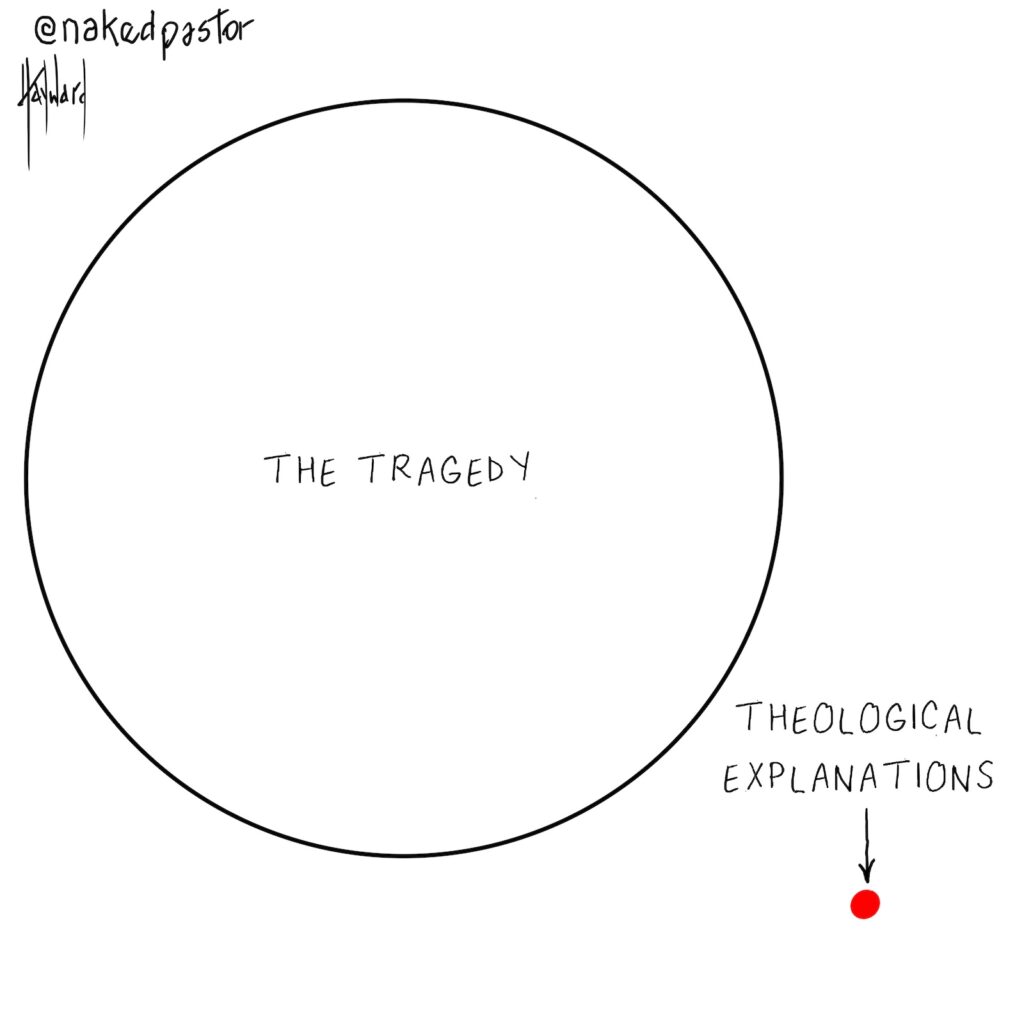As is not uncommon, there was a bit of a “discourse” yesterday on Christian Twitter. It could be that it was a discourse only on Episcopal Twitter, or “Weird Anglican” Twitter, but I don’t follow enough people to have a sense of how widespread the discourse was. By the way, a “discourse” may fairly be described as a discussion or a debate, but to call it a debate would lead one to believe that there are formal or informal rules by which all abide. That would make it way less fun. Also, the participants tend to hold their positions more closely than one might in a discussion, which makes it way more interesting.
Anyway, this one was fueled by a cartoon, which may have been a reflection on a previous discourse. As happens, one day’s discourse begets another’s. The root of the issue may have been the role or place of contemporary psychological theories and methods in pastoral care as opposed to a priest’s particular role as sacramentalist and theologian. Besides the obvious fact that this is a false binary (or perhaps because it is), one can see how this generates spicy takes that further whip up the discourse such as the following:

Naked Pastor expresses a certain kind of truth here. There’s no way, for instance, that I’m going to introduce Karl Barth’s take on the doctrine of evil to a family whose minivan has just been obliterated by a drunk driver, resulting in grave injury for several members. The injured, of course, may have no opportunity to engage in theological reflection on their condition. It’s the close observer who is anguished by the suffering of the beloved. Which leads to my first observation on the drawing above: tragedy defies tidy definition. A significant part of the problem in coming to terms with a tragedy is the impossibility of conceiving its boundaries. This is especially true in the moment, and it can remain the case of long periods of time following the event. Bits and pieces of psychic shrapnel can emerge into consciousness at unexpected moments, like bits of bomb fragments emerging from a combat veteran’s knee.
A person who is anguished by the suffering of their beloved (and certainly for the one who suffers, when they have enough consciousness to reflect on the situation) can find themselves in a place like Charlie Brown under the raincloud: inept, abandoned, and hopeless.

And in truth, their experience can bear that out. We (people, humans, us) tend to think that somehow Charlie Brown’s dampness is his own fault, and despite years of elementary school earth science and a fairly good working knowledge of the water cycle, our chances of getting wet will somehow exponentially increase because we are next to him. Charlie feels us edging away from him in the dugout. So does the one who suffers and the one who is anguished.
In the midst of an undefined — perhaps inconceivable — suffering, the presence of an other, a witness who has not abandoned the sufferer, can be crucial for the one who suffers to experience hope. But who can stand in that place? Mary, the mother of Jesus, and the women who followed him from Galilee did. One who has a robust understanding of the doctrine of evil and so does not conceive of another’s suffering as potential contamination might be able to remain present. I think that is what @MtrKDJoyce was getting at when she said that “what makes christian pastoral care different from social work or secular chaplaincy is that the practitioner is acting from their own theological convictions…” Exactly. My theology is present in the room because I am present in the room. It is what enables me to be present. Fully present.
And to be present means to be receptive, adaptive, and empathetic to the person who is suffering. It is possible that what the sufferer needs is theology, but it is not imperative that I articulate theology for my presence to be pastoral. As Mother Katie goes on to elucidate in her tweet: “…but that DOES NOT mean that to be pastoral care, those convictions must always/ever be verbalized aloud.” I am convinced that the presence of Christ is mediated through a clergy person at the beside much more often that at the altar. (And not solely through clergy at either.)
It could be that this presence is even mediated through a Commander in Chief, albeit a fictional one. In Season One, Episode 22 of “The West Wing”, we learn that the brother of Toby Zeigler, White House Director of Communications, is a payload specialist on the space shuttle, and that the space shuttle has encountered significant technical difficulties as it prepares to re-enter the earth’s atmosphere. What we don’t learn until around the 35 minute mark that Toby is estranged from his brother. His anguish in knowing that is brother is in jeopardy is certainly compounded by the unresolved rift between them.
The President, it seems, is the only one who knows all of these nuances. The President is also famously nerdy. He likely understands the technical challenge and the theological ramifications better than anyone in the West Wing, with the possible exception of Toby himself. The President’s reassurances that “the shuttle flies itself” are the technological equivalent to “God is in control of all things.” Both deny the reality of human agency in history and the historically proven capability of humans to screw the pooch. Toby knows that the shuttle doesn’t fly itself, and he won’t be comforted by the President’s false bravado. He does, however, accept the President’s compassion and companionship in this uncertainty at the moment which the President admits that humans do, in fact, have to land the space plane.
